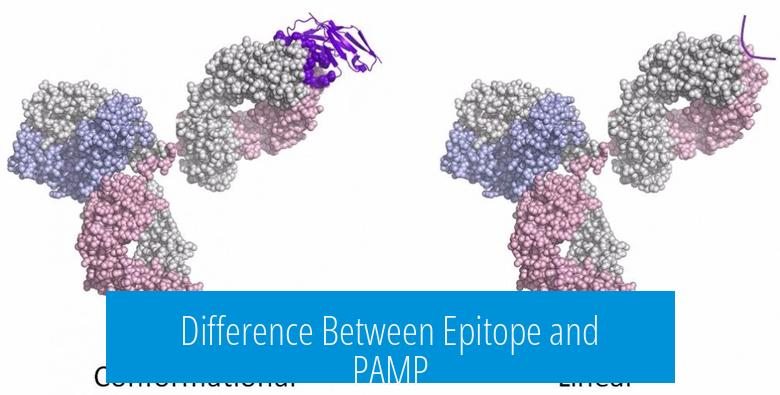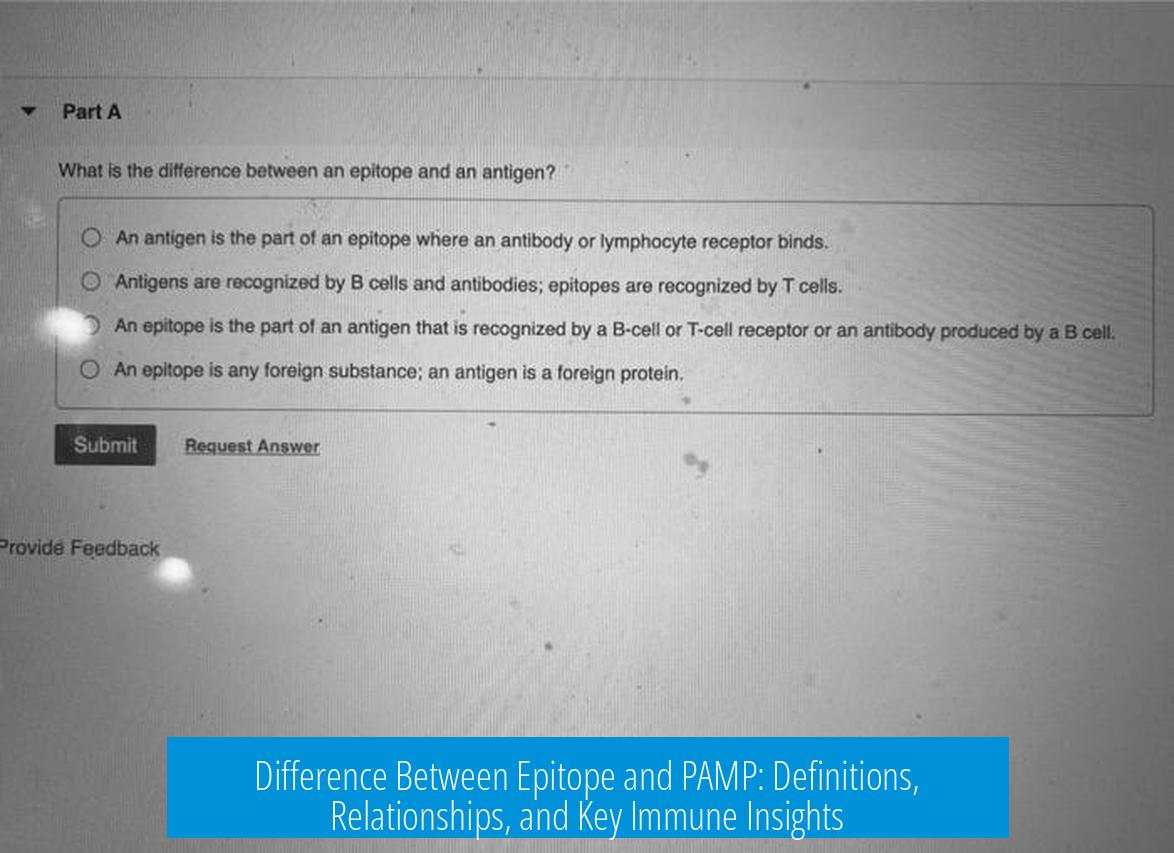Difference Between Epitope and PAMP

The primary difference between an epitope and a PAMP lies in their nature and role within the immune system: a PAMP is a molecular pattern broadly found on pathogens that triggers innate immunity, while an epitope is a specific protein region recognized by antibodies during adaptive immunity.
Definition and Nature
PAMP, or Pathogen-Associated Molecular Pattern, refers to molecules commonly present on microbes. These molecules can include sugars, lipids, and proteins. PAMPs are recognized by pattern recognition receptors (PRRs) of the innate immune system. They alert the body to the presence of pathogens through generic, conserved molecular features.
Epitope is a precise segment usually part of a protein antigen. It serves as the binding site for antibodies produced by the adaptive immune system. Unlike PAMPs, epitopes are often highly specific to the antigen. They represent the molecular “target” for immune recognition and vary widely among pathogens.
Relationship Between PAMPs and Epitopes
- PAMPs may contain one or multiple epitopes, since PAMPs can include protein structures.
- However, not all epitopes are found on PAMPs because epitopes can exist on various antigens unrelated to PAMP molecules.
This distinction highlights that PAMPs initiate general immune responses, whereas epitopes facilitate precise antibody binding.
Related Immune Concepts
- DAMPs (Damage-Associated Molecular Patterns) differ as they originate from host cells damaged by stress or injury, not from pathogens. They also contain epitopes recognized by immune system antibodies.
- Antibodies can be employed in laboratories as markers for proteins. This use does not involve immune activation but leverages the specific binding of antibodies to epitopes.
Summary Table: Epitope vs PAMP

| Feature | PAMP | Epitope |
|---|---|---|
| Nature | Broad molecular pattern on pathogens (sugars, lipids, proteins) | Specific protein region binding to antibody |
| Immune System Role | Activates innate immunity via PRRs | Target for adaptive immunity antibodies |
| Occurrence | Found on microbes | Found on antigens including PAMPs and others |
Key Takeaways
- PAMPs are general pathogen signatures triggering innate immunity.
- Epitopes are precise protein sites recognized by antibodies within adaptive immunity.
- All PAMPs may contain epitopes, but epitopes exist beyond PAMP molecules.
- DAMPs represent self-origin signals also possessing epitopes.
- Antibodies bind epitopes for immune response or laboratory detection.
What is the main difference between an epitope and a PAMP?
A PAMP can be any molecule like sugars or lipids linked to pathogens, while an epitope is a specific protein region recognized by antibodies.
Can all epitopes be considered PAMPs?
No. While PAMPs contain epitopes, many epitopes are found on proteins unrelated to pathogen patterns.
How do epitopes interact with the immune system compared to PAMPs?
Epitopes bind directly to antibodies in the adaptive immune response. PAMPs mainly trigger the innate immune system.
Do PAMPs always involve proteins?
No. PAMPs can be proteins or other molecules like lipids and sugars that signal the presence of pathogens.
Are epitopes only found on pathogen molecules?
No. Epitopes are parts of proteins but can be from pathogens, damaged cells, or any non-self molecules recognized by antibodies.





Leave a Comment